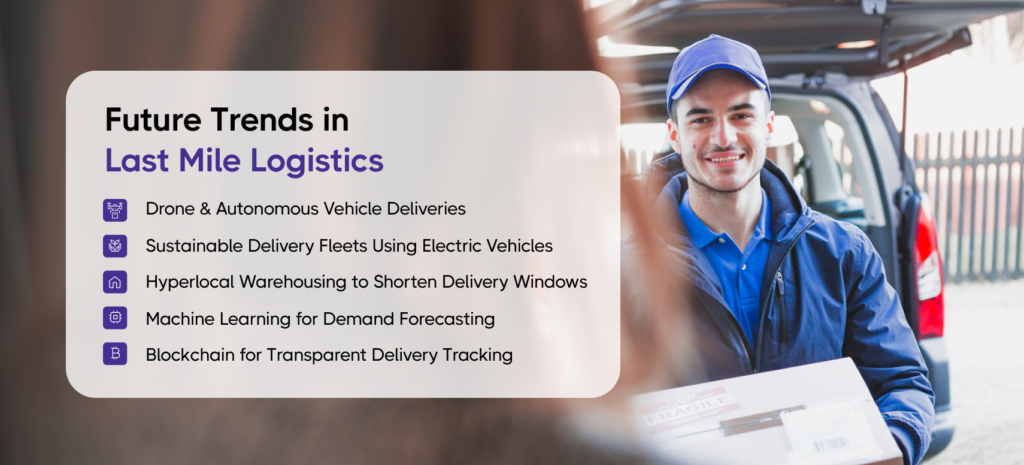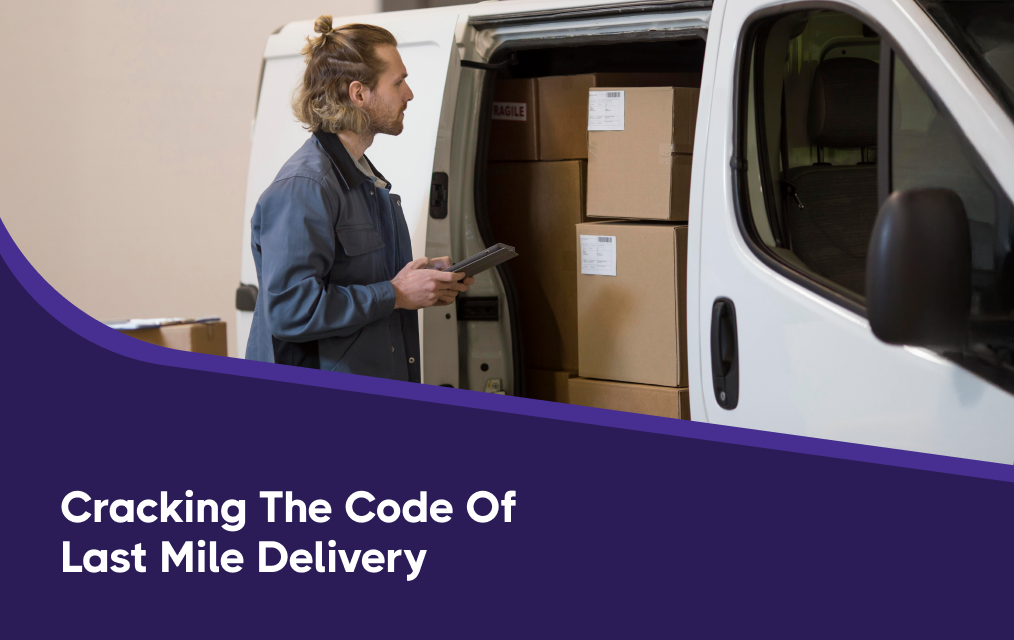When a customer clicks “Buy Now,” the clock starts ticking. Whether it’s a gift, a gadget, or groceries, the pressure is on to get that order delivered quickly and seamlessly. But while front-end systems have evolved to make online shopping smooth, the final stretch—last mile delivery—remains one of the most complex and costly parts of eCommerce logistics. Whether it’s navigating congested city streets or meeting rising customer expectations for same-day delivery, last mile logistics are a critical puzzle for businesses in the UAE and beyond.
In this blog, we unpack the core last mile delivery challenges, explore what drives up costs, and highlight how businesses can boost last mile delivery efficiency using the latest technologies and strategies.
Understanding the Last Mile Delivery Process
Last mile delivery refers to the final stage in the supply chain, where goods are transported from a local hub or fulfillment center to the customer’s doorstep. Despite being the shortest segment in distance, it's one of the most challenging and expensive parts of delivery logistics due to its complexity, variability, and consumer-facing nature.
From eCommerce giants to small online retailers, everyone faces the heat when it comes to delivery logistics challenges—especially in a rapidly growing digital economy like the UAE.
Major Last Mile Delivery Challenges
Let’s dive into some of the most pressing challenges in last mile logistics:
1. High Delivery Costs
Up to 53% of total shipping costs can come from the last mile alone. Contributing factors include failed delivery attempts, inefficient routing, and high labor expenses.
2. Urban Traffic Congestion
In high-density cities like Dubai and Abu Dhabi, last mile transportation problems are magnified by traffic congestion, limited parking, and frequent road closures—leading to delayed or failed deliveries.
3. Delivery Failures & Customer Expectations
Missed deliveries, inaccurate ETAs, or poor communication can result in customer dissatisfaction. In today’s eCommerce landscape, reliability and transparency are key.
4. Scalability Issues
As order volumes increase, traditional last mile logistics processes often struggle to scale without losing efficiency.
5. Environmental Concerns
With rising demand for eco-conscious practices, businesses also face pressure to reduce emissions from last mile delivery logistics operations.
Cost Breakdown & Role of Technology in Last Mile Delivery
Where Do the Costs Come From?
- Labor: Drivers, coordinators, and support staff
- Fuel & Maintenance: For delivery fleets
- Technology Infrastructure: Tracking, routing, and communication tools
- Returns & Redelivery: Failed deliveries often lead to repeat trips
- Customer Service: Managing inquiries and complaints
How Technology Can Help
The right tech tools can significantly reduce last mile delivery cost and increase visibility.
- Modern Delivery Tracking Tools: Offer real-time status updates to both customers and logistics managers.
- Last Mile Delivery Route Optimisation: AI-based routing minimizes distance, fuel consumption, and time.
- Last Mile Delivery KPIs: Analytics dashboards track performance, delivery times, and success rates.
- Automated Notifications & Scheduling: Improve communication and reduce failed deliveries.
Investing in last mile delivery technology not only cuts costs but also enhances customer satisfaction.
Solutions for Improving Last Mile Delivery Efficiency
To overcome supply chain delivery issues and optimize performance, consider the following strategies:
1. Micro-Fulfillment Centers
Strategically located local hubs help reduce delivery times and cut transport costs.
2. Crowdsourced Delivery Models
Using part-time drivers or gig workers can boost scalability and flexibility during peak times.
3. Real-Time Tracking & Communication
Keep customers informed throughout the last mile logistics process to reduce missed deliveries.
4. AI-Driven Route Optimization
Optimize routes for time and fuel efficiency, even during traffic-heavy periods.
5. Smart Parcel Lockers
An ideal solution for failed deliveries in residential or commercial buildings.
By adopting these last mile delivery solutions, businesses can transform challenges into growth opportunities.
Future Trends in Last Mile Logistics

The future of last mile logistics is tech-forward, sustainable, and customer-centric. Here’s what’s on the horizon:
- Drone & Autonomous Vehicle Deliveries
- Sustainable Delivery Fleets using electric vehicles
- Hyperlocal Warehousing to shorten delivery windows
- Machine Learning for Demand Forecasting
- Blockchain for Transparent Delivery Tracking
These innovations in last mile delivery will revolutionize the industry, especially in dynamic markets like the UAE.
Conclusion: Ready to Tackle Last Mile Challenges?
Last mile delivery may be the most complex leg of the journey, but it’s also the one where customer loyalty is built—or lost. Businesses that invest in smart tools, optimized logistics, and scalable models are best positioned to succeed in today’s competitive market.
At eShipper UAE, we specialize in last mile delivery logistics that work for your business, not against it. From route optimization to real-time tracking and scalable fulfillment, we help you stay ahead of the curve.
Ready to level up your last mile delivery strategy?
Contact eShipper UAE today to learn how we can optimize your fulfillment journey from warehouse to doorstep.
FAQ: All About Last Mile Delivery
Last mile delivery is the final step in the delivery process when a product moves from a distribution center to the customer. It’s crucial because it directly impacts customer satisfaction.
High delivery costs, traffic congestion, failed deliveries, and scalability are among the biggest challenges in last mile delivery.
Because it involves multiple stops, high labor costs, fuel, technology, and frequent failed deliveries that require redelivery.
It leads to longer delivery times, increased fuel usage, and a higher chance of missed delivery windows.
Technology helps with route optimization, real-time tracking, automated communication, and performance analytics—cutting costs and improving efficiency.
By optimizing routes, using local fulfillment centers, leveraging gig economy drivers, and investing in delivery management platforms.
It increases operational costs, delays, and customer dissatisfaction, often requiring redelivery and additional customer service efforts.
It includes autonomous vehicles, drone deliveries, sustainable transport solutions, and AI-driven logistics for smarter, faster deliveries.




